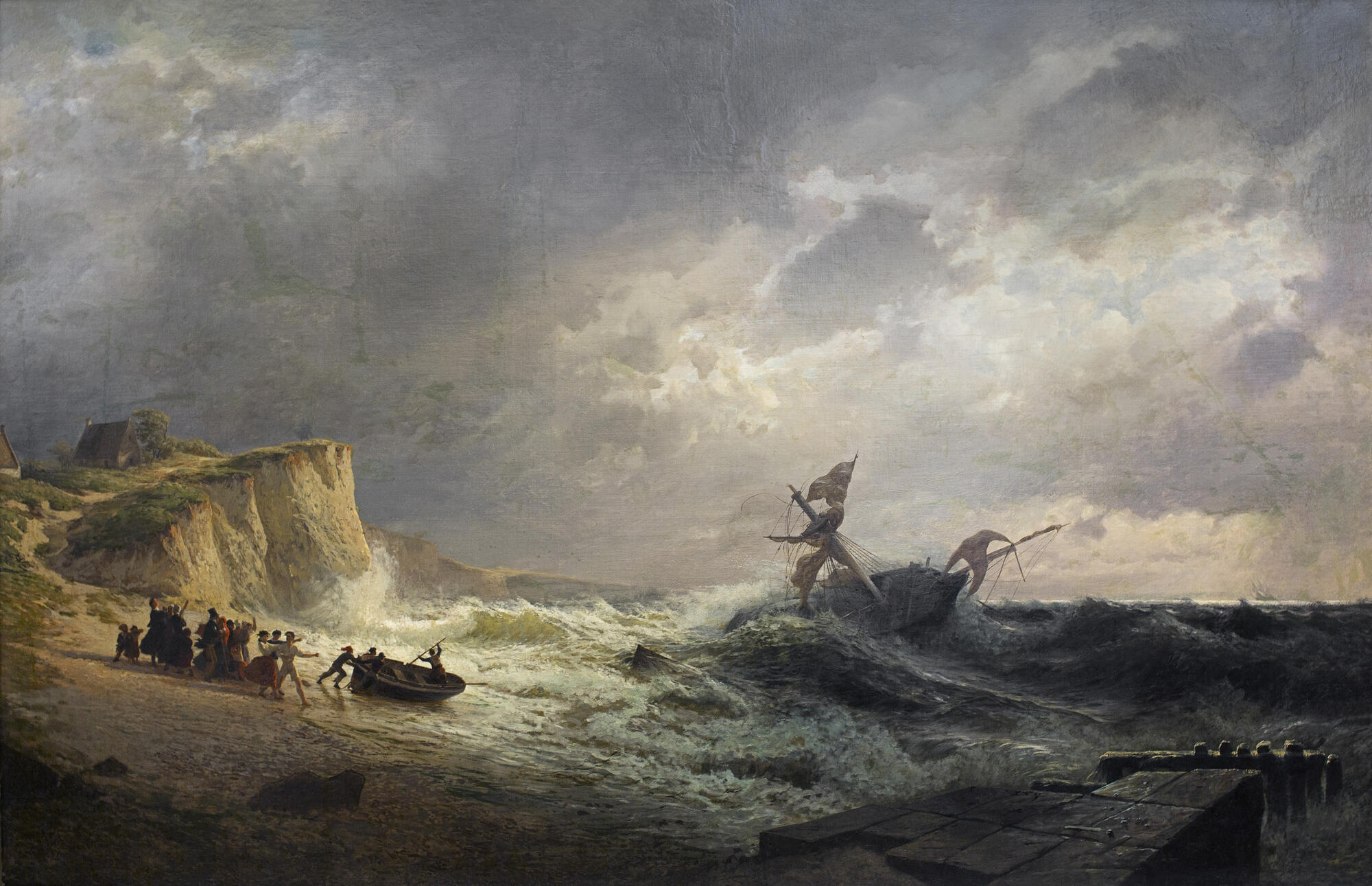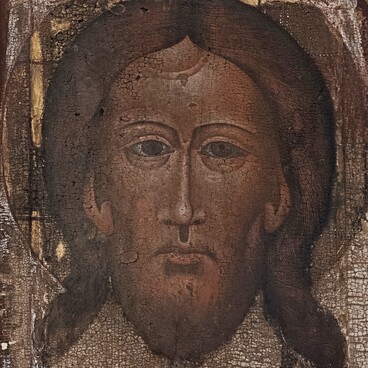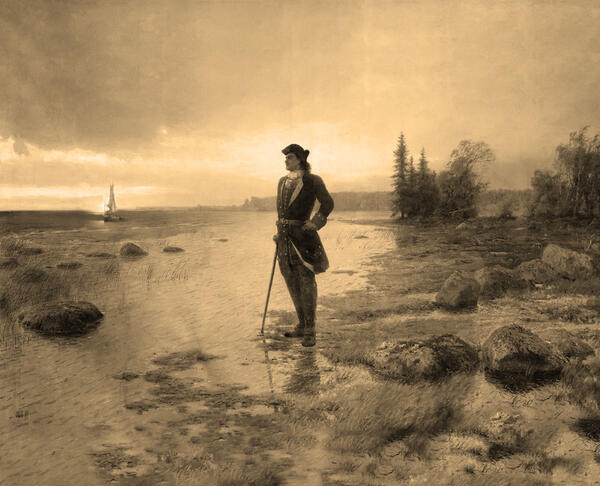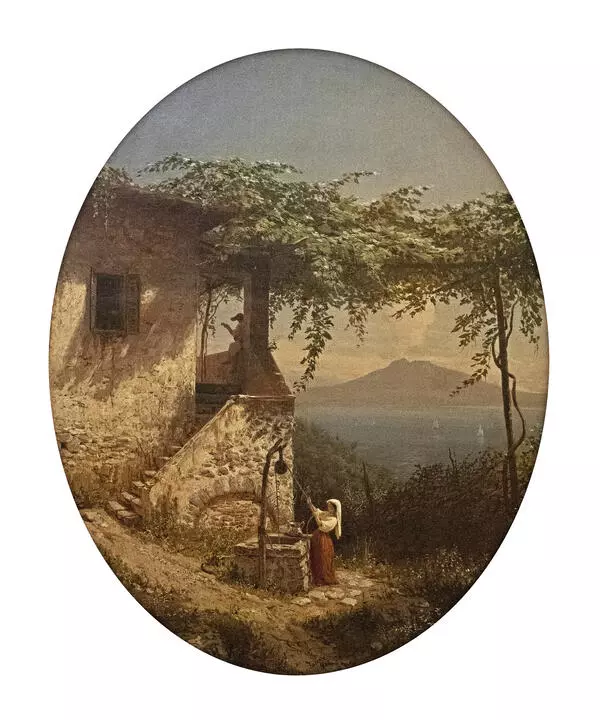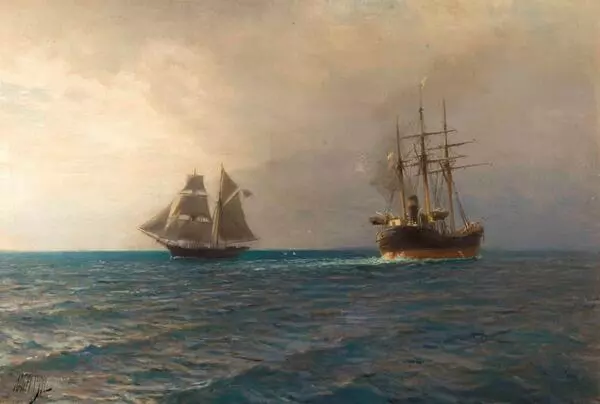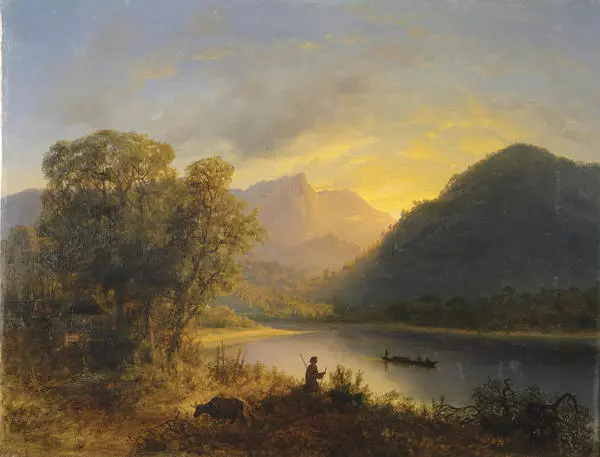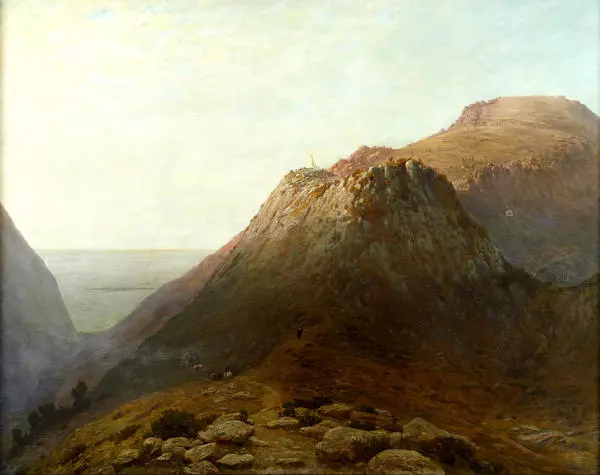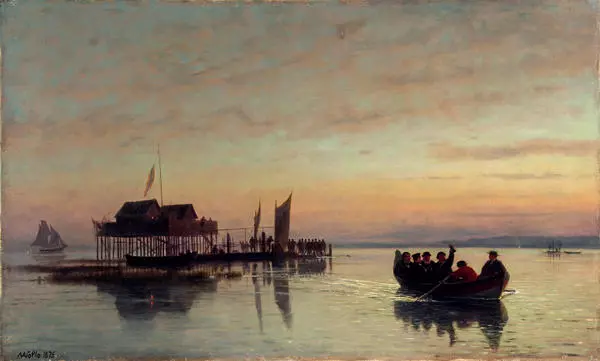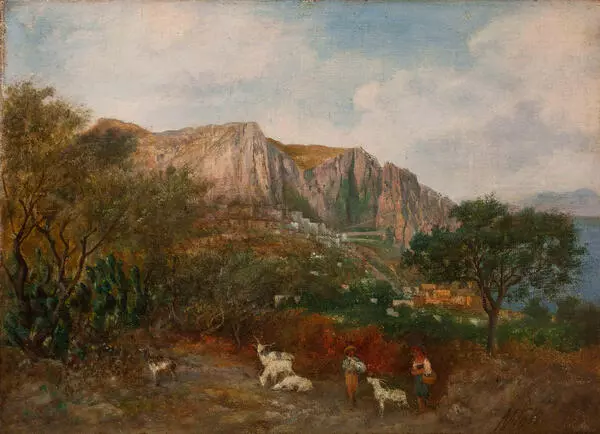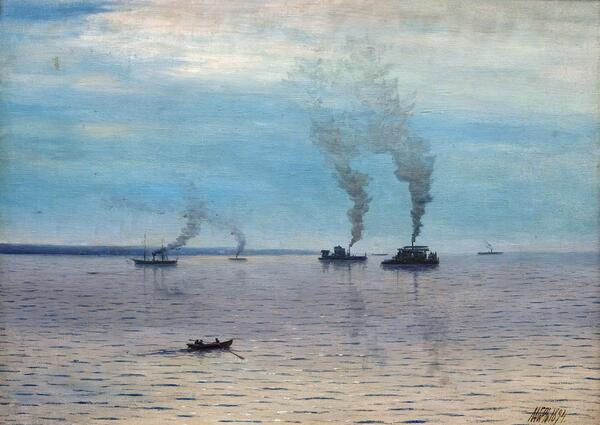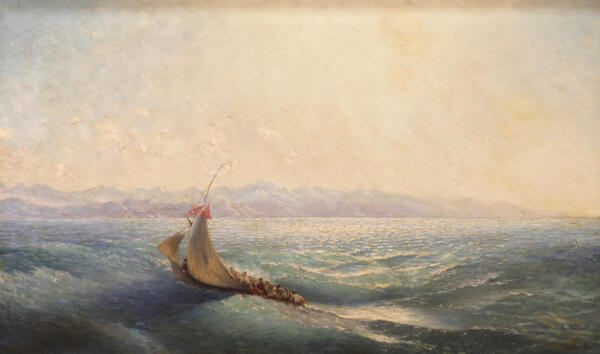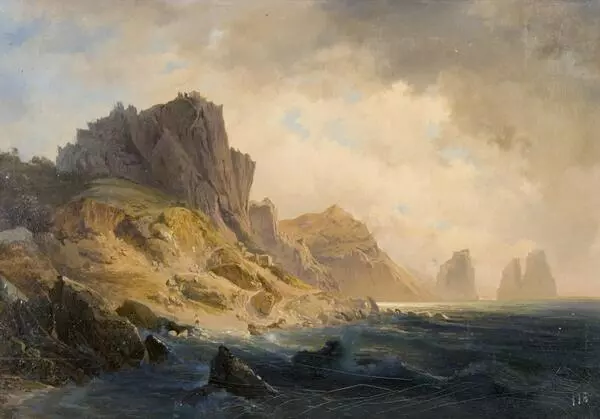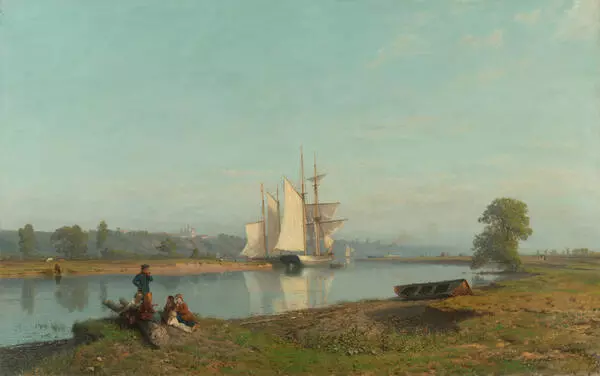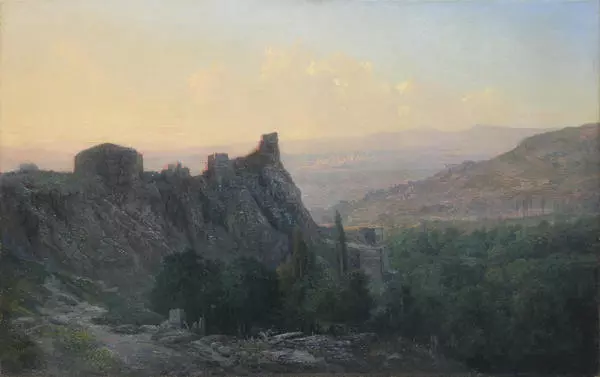Lev Lagorio was born in 1827 in Feodosia into the family of a Neapolitan vice-consul. His first teacher was a seascape painter Ilya Aivazovsky, who came from the same city and gave several lessons to the future artist. Aivazovsky’s style largely influenced the work of his student: in his paintings, Lagorio often depicted the sea.
After graduating from the Academy in 1852 with the Great Gold Medal, Lagorio became a Russian citizen and received a scholarship to go to Europe, where he stayed from 1853 to 1860. Most of the time, the artist lived in Italy — the homeland of his ancestors. Lagorio painted sketches and small-scale pictures, and the paintings “Capo di Monte” and “Views of the Pontine Marshes”, which he created while being abroad, earned him the title of the professor of landscape painting.
Lagorio painted spectacular landscapes and paid special attention to sunlight. In the early 1870s, he focused on more bitter themes of storms and shipwrecks. The artist created the painting, displayed in the museum, in the 1860s. It has the features that characterize both creative periods of the artist.
The sky takes up a lot of pictorial space. Sunshine breaks through the alternating dark and white clouds. Some parts of the shore, as well as the sea foam are rendered in light golden colors, contrasting with the high dark waves on the right. This is the way Lagorio enhances the sense of anxiety.
Following the tradition of the Romantic landscape painting, Lagorio depicts the confrontation between a human being and the power of nature. Several people survived the shipwreck. The mast of their ship is broken, the sails are torn, and the next wave is likely to hit their ship against the rocks. The people on the shore vary in their reactions: some watch the scene with curiosity, some pray, looking at the sky, and some rush to help the victims of the shipwreck.
The storm was one of the favored subjects of Romantic painters. In this picture, Lagorio conveyed the power of nature, the depth of human experience and the tension at the moment between life and death.
In 1842, Lagorio entered the Imperial Academy of Arts, and almost ten years later he traveled to the Caucasus. In his early works painted during this journey, one can trace his interest in the meticulous study of nature and experiments with lighting.
After graduating from the Academy in 1852 with the Great Gold Medal, Lagorio became a Russian citizen and received a scholarship to go to Europe, where he stayed from 1853 to 1860. Most of the time, the artist lived in Italy — the homeland of his ancestors. Lagorio painted sketches and small-scale pictures, and the paintings “Capo di Monte” and “Views of the Pontine Marshes”, which he created while being abroad, earned him the title of the professor of landscape painting.
Lagorio painted spectacular landscapes and paid special attention to sunlight. In the early 1870s, he focused on more bitter themes of storms and shipwrecks. The artist created the painting, displayed in the museum, in the 1860s. It has the features that characterize both creative periods of the artist.
The sky takes up a lot of pictorial space. Sunshine breaks through the alternating dark and white clouds. Some parts of the shore, as well as the sea foam are rendered in light golden colors, contrasting with the high dark waves on the right. This is the way Lagorio enhances the sense of anxiety.
Following the tradition of the Romantic landscape painting, Lagorio depicts the confrontation between a human being and the power of nature. Several people survived the shipwreck. The mast of their ship is broken, the sails are torn, and the next wave is likely to hit their ship against the rocks. The people on the shore vary in their reactions: some watch the scene with curiosity, some pray, looking at the sky, and some rush to help the victims of the shipwreck.
The storm was one of the favored subjects of Romantic painters. In this picture, Lagorio conveyed the power of nature, the depth of human experience and the tension at the moment between life and death.
